How can big, heavy metal boats float on water? Help little scientists discover the answer on their own with this simple kids’ science experiment and craft in one.
With just a few supplies, children can build their own floatable boat, too! Want even more kids’ science!? Grab our 30 Science Experiments in our shop and continue the fun!

While taking the ferry on a recent summer road trip, my 5 year-old, A, asked how a big heavy metal boat loaded with so many cars could float. So naturally, I had to find a science experiment she could do that would show her just how a heavy material like steel (or clay) could be made to float. While this experiment only takes a half hour to complete, my kiddos were so fascinated that they spent hours making and testing various boats.
Getting Ready
First, I grabbed a large bowl of water and clay. We used a non-toxic, oil-based modeling clay, but you could also use a polymer clay like Sculpey. Playdough and ceramic clay will not work for this activity since they will soften and eventually dissolve in water.
For a little extra fun, I also grabbed a piece of wax paper, some toothpicks and tape to make sails.
Kids’ Science Experiment: Making Clay Boats
I handed each kid a ball of clay and asked them if they thought they would float. Both of them shook their head. I had them test their guess by placing the clay ball into a tub of water.
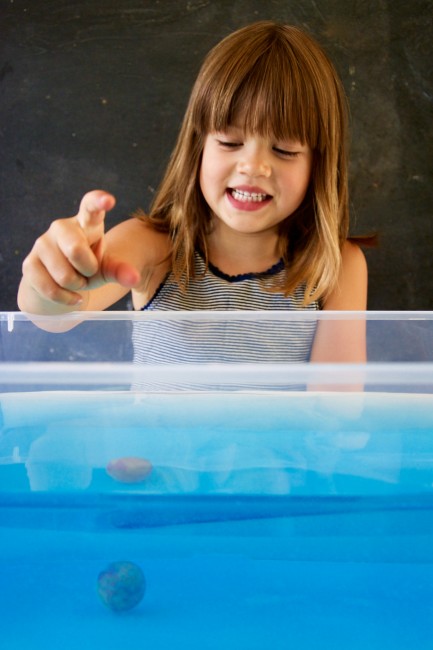 Yep, it sunk!
Yep, it sunk!
I asked my 5 year-old what she thought helped something float. After a little thought, A decided things that float are light. I reminded her that we often see heavy logs floating at the beach and A changed her mind and said something has to be less dense than water to float.
Then, I asked her to think about how she floats in a pool. She showed me how she spreads out like a sea star. So she added, “The shape of the object could help something float, too.”
With those ideas in mind, I asked her if she could change her ball of clay to make it float.
She started out by simply flattening the ball out, but the water quickly ran over the edge of the clay and sunk.
Next, she tried making edges to keep the water out. It was a bit tricky, but after a few tries she was able to make the clay float!
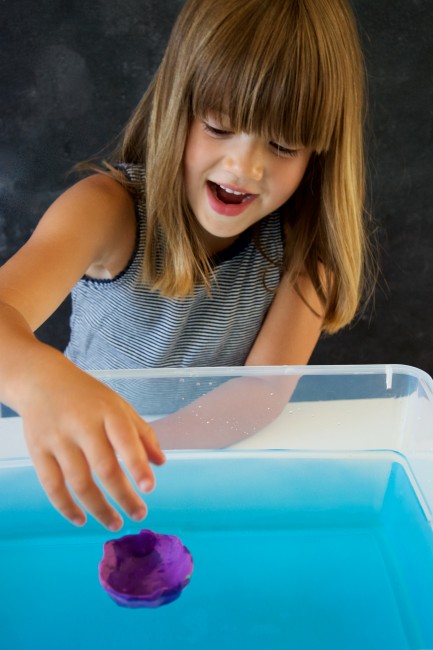
(Warm clay is easier to manipulate, so it helped to soften the clay a bit by rolling it in her hands to warm it up.)
She wanted to make a kayak, so she rolled the clay into a log shape, and then I helped press it flat with my thumb. Once the clay was flattened enough, A squeezed the edges of the clay to make walls for the boat. I helped A pinch the ends together to keep the walls more upright.
Over the next hour or so, she constructed many more boats in varying shapes including a leaf boat, heart boat and a rectangle barge. Her 3 year-old little brother, Q, was equally fascinated but found it difficult to make a water-tight ship, so I had to help him a bit.
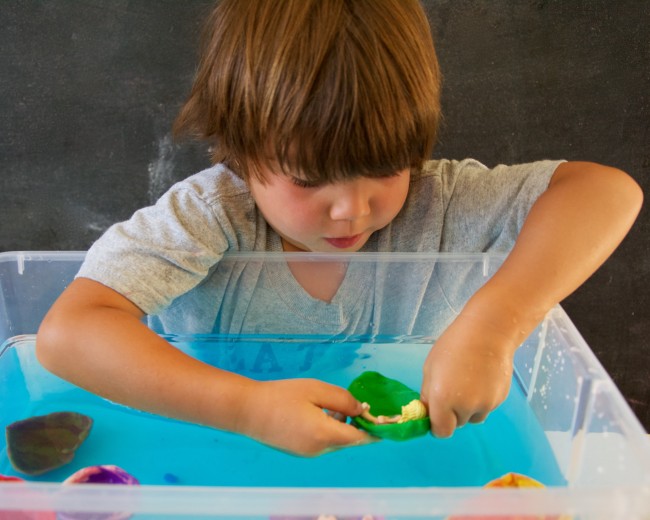
They loved placing in a few passengers and gently blowing the sails to make them float across the tub. I’m sure they would have filled the tub with various boats if we didn’t run out of clay. This was one kids’ science experiment that kept them entertained for hours!
The Science Behind It
So why does simply changing the shape of an object allow it to float?
The answer is displacement. When the clay ball is placed in the water, it displaces (or pushes aside) the water. Whether the clay will be buoyant or float is determined by Archimedes’ Principle which states that any object in a fluid is buoyed up by a force equal to the weight of the fluid displaced by the object. When the clay is placed in water, there are two forces working upon it in opposite directions. Gravitational force pulls the clay down, while buoyant force pushes it upwards. Gravity pulls the clay down with a force equal to the weight of the clay, while buoyant force pushes the clay upwards with a force equal to the weight of the water that the clay displaced. If the clay can displace a volume of water that equals (or is greater) than the weight of the clay, then it will be buoyant and float.
When the clay was in the form of a ball, it displaced only a small volume of water. The weight of that volume of water was less than the weight of the clay and thus the buoyant force was less than the gravitational force. The clay ball sunk.
Changing the shape of the clay didn’t change the weight of the clay, but did change how much water the clay could displace. By pushing aside more water, the clay boat was able to displace a volume of water that weighed the same (or more) than the weight of the clay. Thus, the buoyant force was equal (or greater) than the gravitational force, and therefore the clay boat floated.
In addition to the shape of the clay boat helping displace a lot of water, the boat was also filled with air. This decreased the clay boats density, helping the boat to float. Large ships like the ferry or cruise ships have wide U-shaped hulls that displace enormous volumes of water, but they also tend to be hollow. This decreases the density of the ship and helps keep the ship afloat despite being loaded with cars, cargo and passengers.
Super Cool Science Kit
For even more fun, check out our mega pack of insanely cool science experiments on our blog and snag it in our shop! Turn an egg to rubber, whip up a tornado in a jar, separate the colors of M&M’s and much, much more.



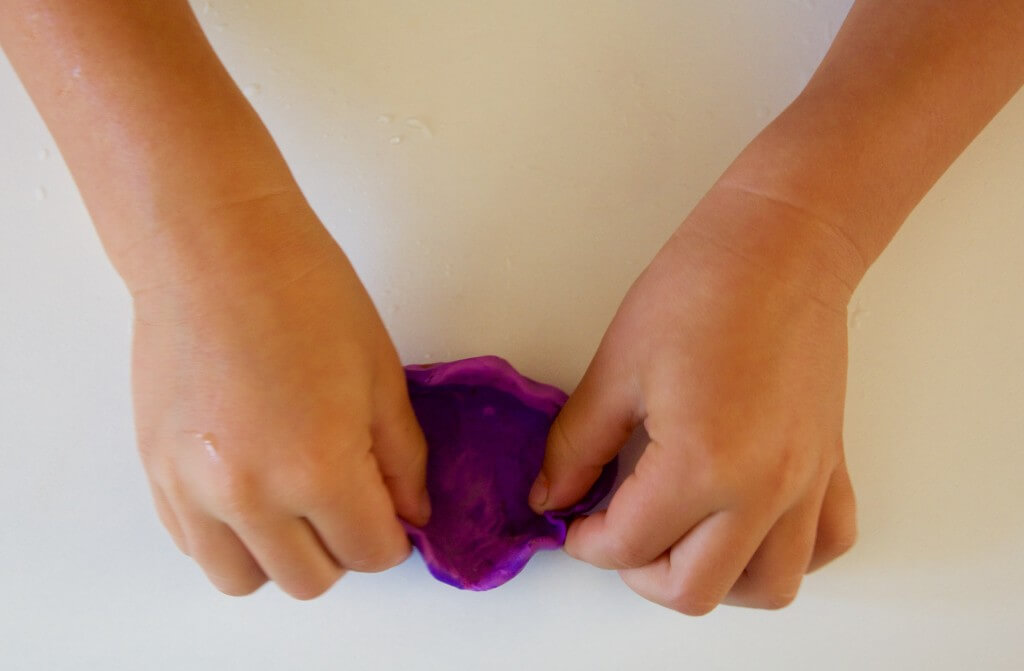
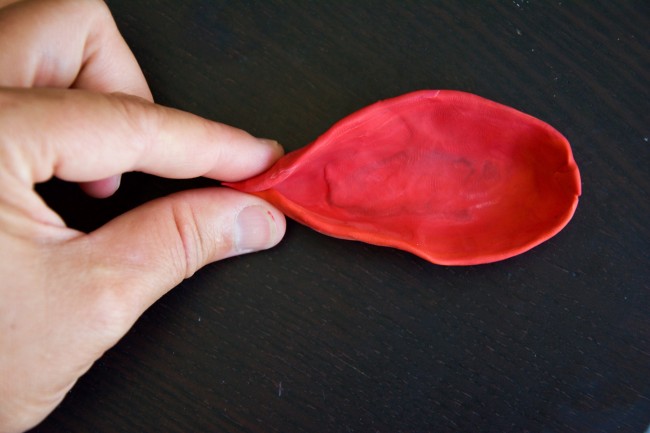
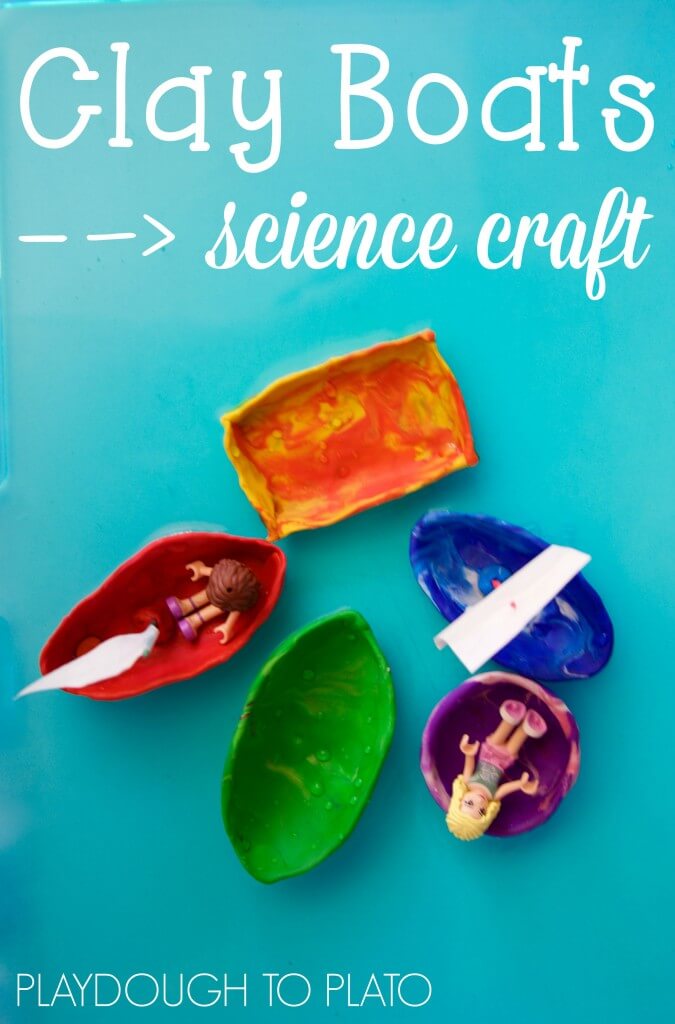




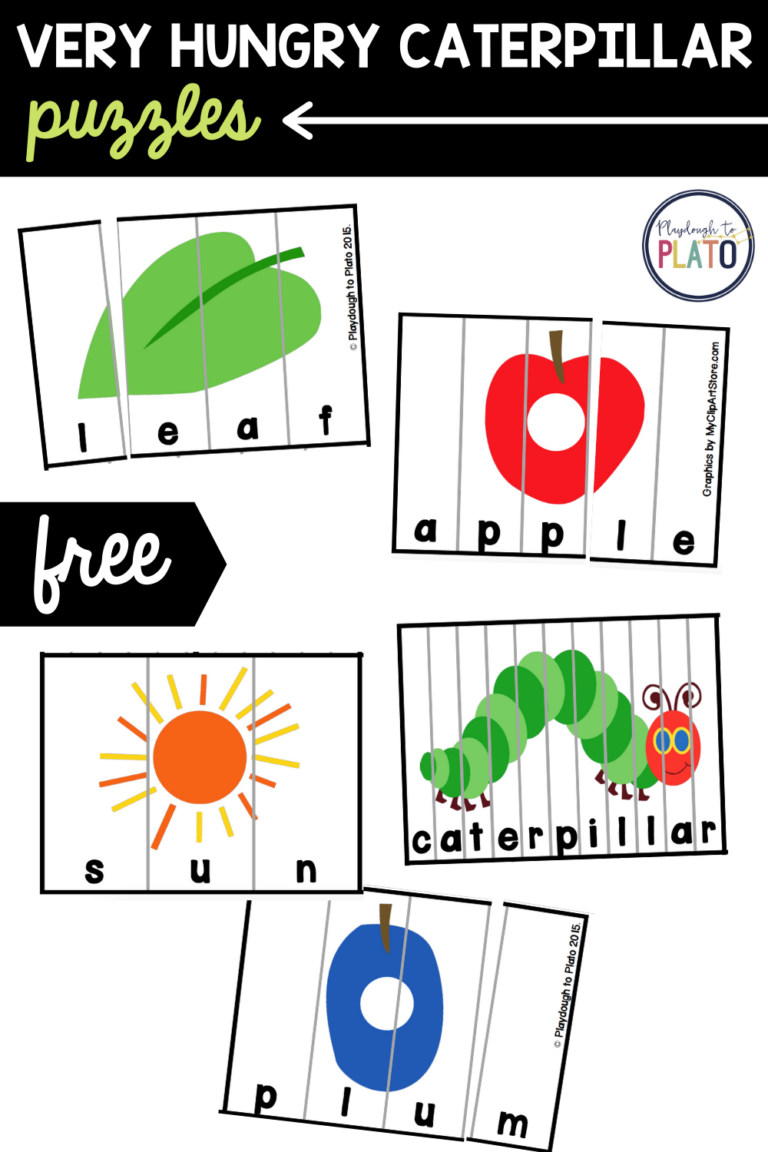
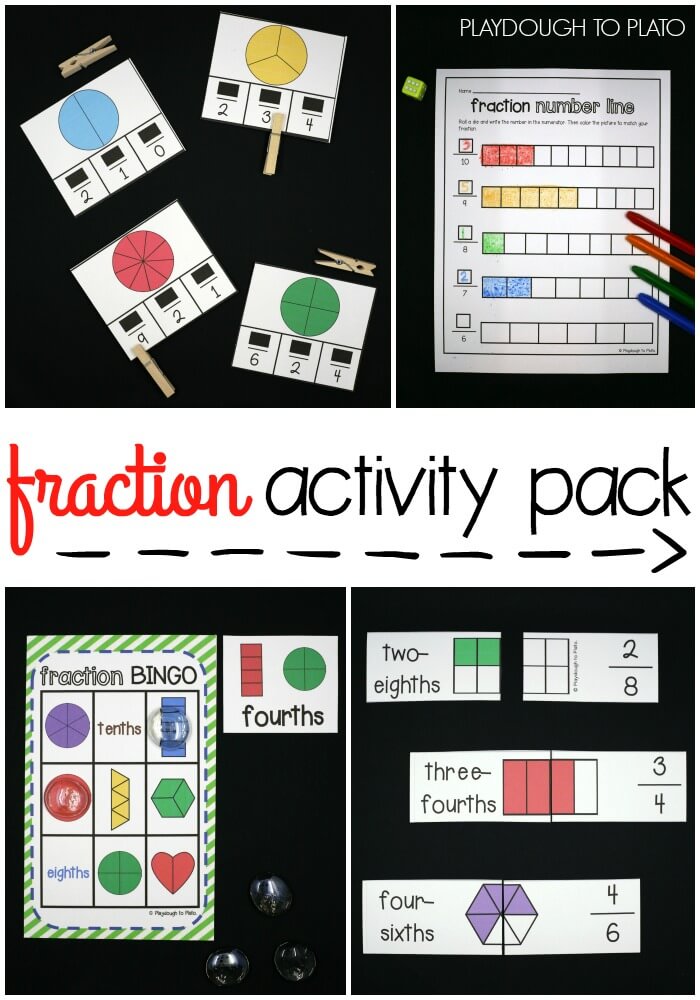
hi
huh dummy lol idk?
huh
lol idk?